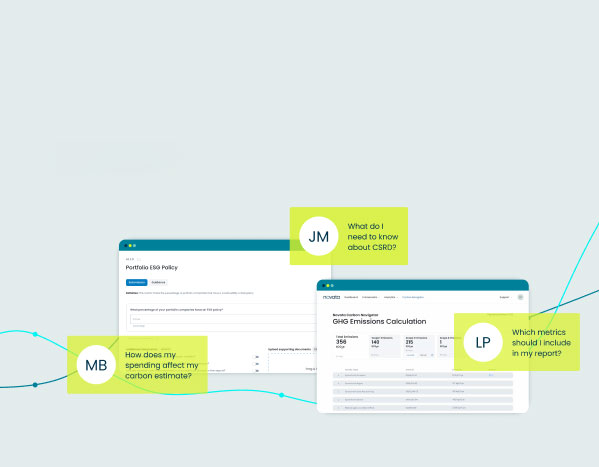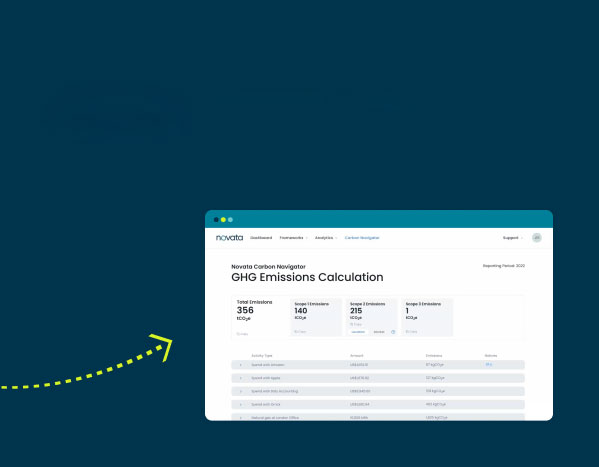Measuring carbon emissions for the first time can be intimidating. There is no shortage of tools available, and each seems to require different information from your company. Solutions can even change from year to year, using one type of data and then switching to another type with seemingly no warning. For companies with limited resources, it’s hard to know where to start.
Whether you’re a private company tracking emissions for the first time or an investor helping your portfolio companies understand their footprint, collecting the right data is critical to setting an accurate baseline. A good first step is to put together a carbon inventory, a collection of data on your activities that can be used to calculate your emissions and establish an accurate baseline. This information can then inform emissions reduction targets and help with tracking progress over time.
Data Needed for a Carbon Inventory
Getting an accurate view of your company’s carbon emissions will require information from across the organization. For companies using carbon calculators to help streamline the process, here’s a look at some of the data necessary for building a carbon inventory.
1. Facility Information
The most basic data you will need for any carbon calculator is information on the facilities your company operates. This includes the location of each facility, as well as whether it is under your “control.”
Operational “control” can be a confusing concept. As a rule of thumb, if you can change the thermostat and you pay a monthly bill that depends on the actual amount of energy you use (rather than a flat fee), then you control the facility. It may also be helpful to gather square footage, since this can sometimes be used as a workaround in case you don’t have energy data.
2. Energy Data
Energy usage is one of the most important things to track for the purposes of calculating emissions, as it flows into Scopes 1 and 2 (as well as a small amount into Scope 3). Importantly, the most accurate way to measure energy consumption is with physical data, which is the actual amount of energy used. Rather than tracking how much money you spend on electricity for your office or diesel for your fleet, it is helpful to get the actual kWh or gallons consumed.
Here are some tips on where to find your energy usage:
- For utilities, e.g., gas and electricity, the best place to look is on your utility bills.
- If you have an Environmental Health and Safety or Energy Management system for tracking consumption at particular facilities, you can log into those and find the data there.
- Finally, consult the physical meters located at your facility and compare the difference on the meters between the beginning and the end of the period.
- Fuel consumption can be calculated by aggregating fuel purchases on fuel cards or by logging into a third-party management system.
3. Spending Data
If you are calculating your Scope 3 emissions, you will likely need to include spending data from the year whose emissions you’re calculating. This can be retrieved through your accountant or directly from your accounting provider by asking for total company expenditure for the calendar year.
It is also important to note the categories of the different purchases the company makes, and sometimes the industry of the supplier. Different emissions calculators may diverge here in their methodologies, but gathering this much information is a great place to start.
4. Other Activities
If you are interested in more accurate Scope 3 emissions, you can gather data on other company activities that fall under Scope 3 categories. These categories are usually optional, but will result in a more detailed result than calculating them based on spending alone.
Scope 3 categories include (but are not limited to):
- Upstream shipping
- Waste generated in operations
- Business travel
- Employee commuting and work from home
- Downstream shipping
Getting Started On Your Carbon Inventory with Novata
Building a carbon inventory is a critical first step in understanding your company’s emissions and setting ambitious, yet achievable, reduction targets. The most difficult step in calculating carbon emissions is often gathering the necessary data. Once a company has internal monitoring processes and year-over-year systems in place, the actual carbon calculation can be quite easy, and easy to repeat.
Novata’s Carbon Navigator enables users to calculate carbon emissions using business information, and it requires no knowledge of the difference between Scopes 1, 2, and 3. Using just the data above—sometimes less—you can get an accurate carbon estimate, submissible to most standards and frameworks, including the ESG Data Convergence Initiative (EDCI) or the Task Force on Climate-Related Financial Disclosures (TCFD).
Whatever your reason for calculating emissions, it is necessary to meet increasingly evolving regulations and move toward a more sustainable future. Learn more about how Novata can support your company’s carbon journey.






